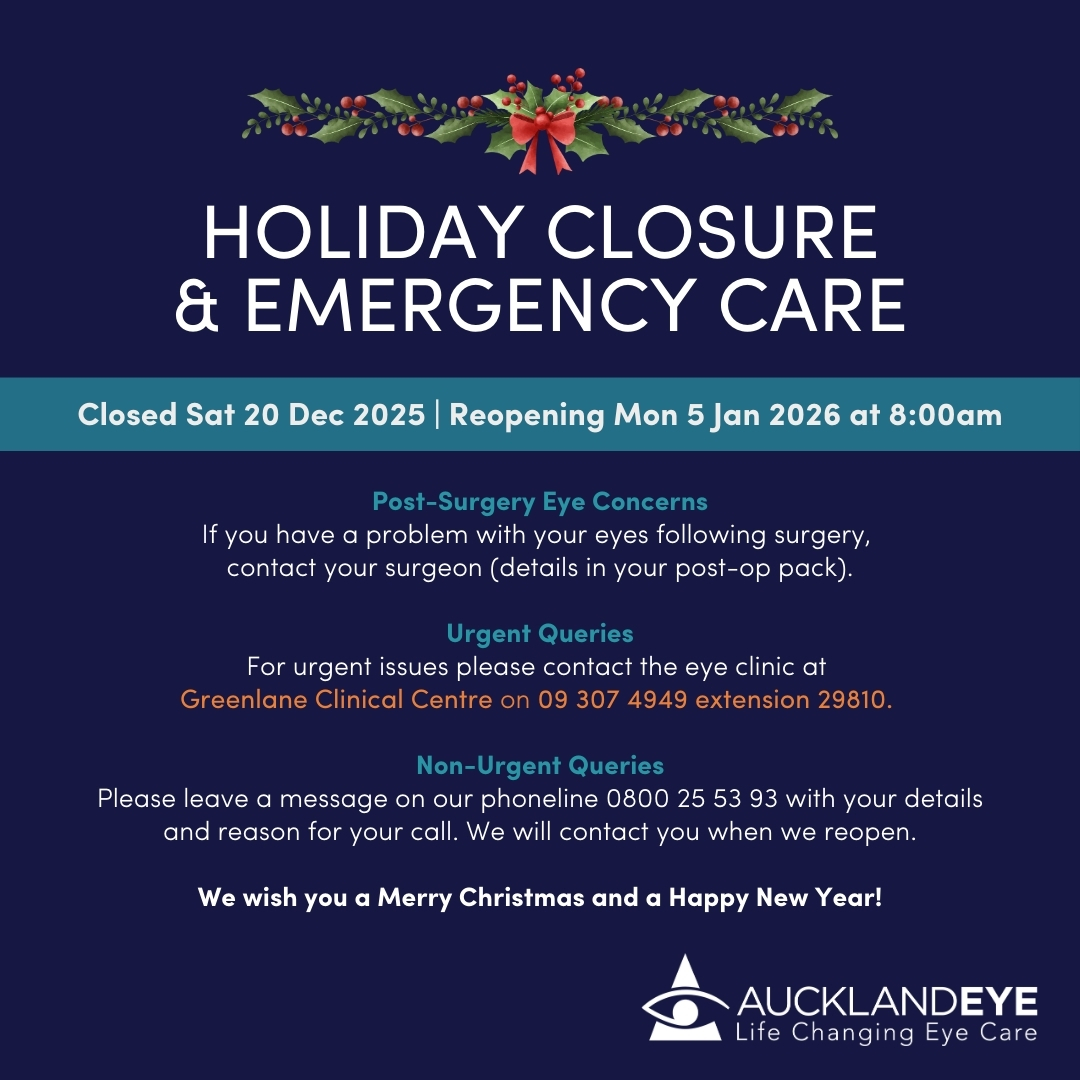Auckland Eye Holiday Season Closure
Auckland Eye will be closed for the Christmas and New Year Break from Saturday, 20 December 2025 and will reopen on Monday, 05 January 2026 at 8:00am.

Cataract is a progressive cloudiness of the natural lens of the eye, and is a natural part of aging. All people will develop this clouding or cataract. As a cataract continues to develop your eyesight becomes more and more blurry, although the process is usually slow so may not be noticed. Effects on vision may include colours losing brightness and increasing glare making night driving more difficult due to intolerance of oncoming headlights.
Removing the cloudy lens from inside the eye through a small incision and replacing it with a new artificial lens (cataract surgery) will not only improve visual quality, but also may reduce or even remove the need to wear glasses. In fact there is now an increasing trend for people to have this operation earlier in left to achieve this benefit. If the surgery is performed earlier (often in the 50s or 60s this will prevent cataract from being a problem in later life.
Cataract surgery is the most common eye operation performed in the world and can improve your quality of life substantially.

Auckland Eye will be closed for the Christmas and New Year Break from Saturday, 20 December 2025 and will reopen on Monday, 05 January 2026 at 8:00am.

Sometimes there’s a short wait before laser eye surgery, learn why this step matters and how it helps ensure the best possible results.

Swimming can leave your eyes red and stinging. Here’s how chlorine and saltwater affect them, and what you can do to keep your vision comfortable.